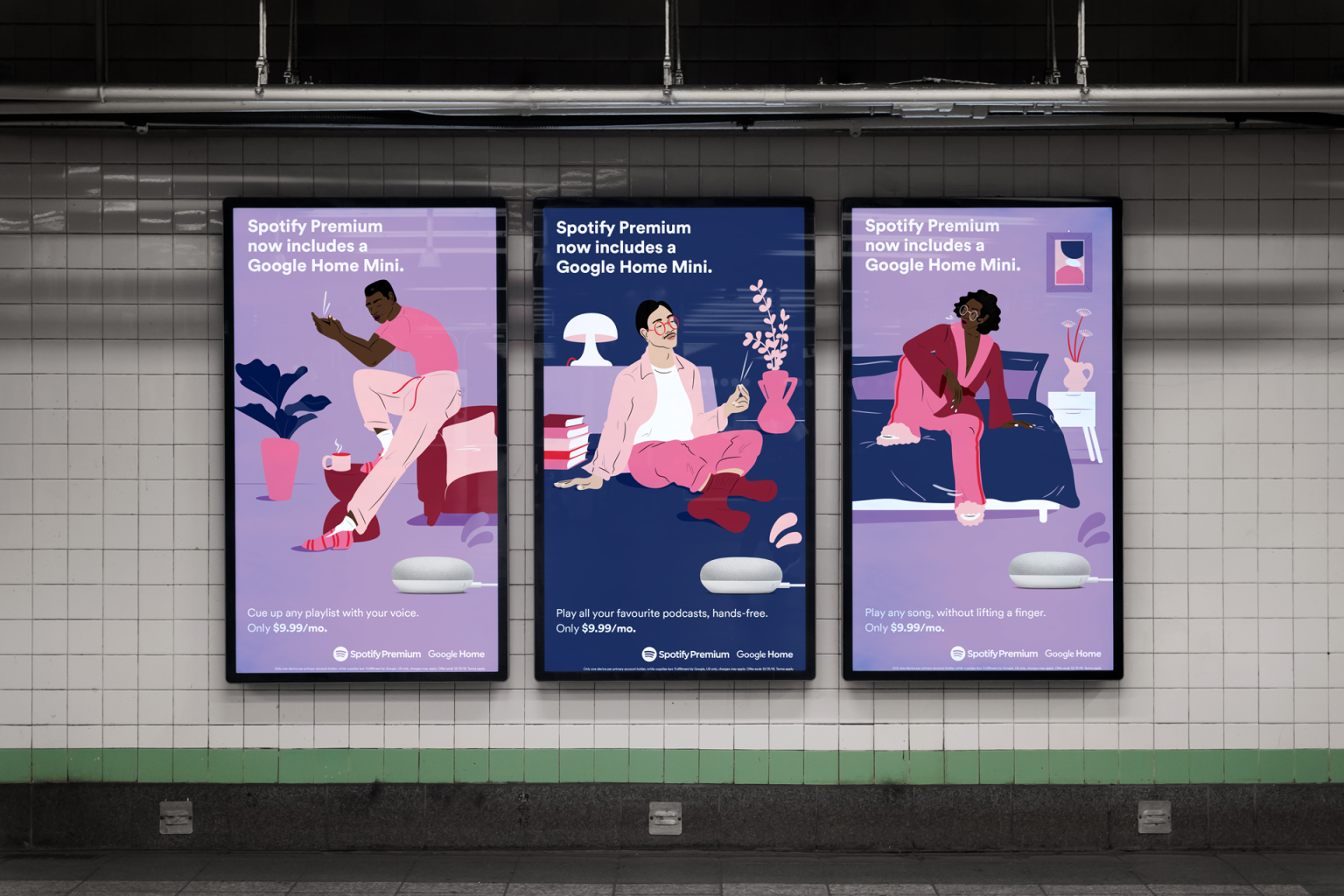“I started without any business plan, which I later came to regret. It was very much a search in the beginning, but I learned through trial and error.”
Sandy van Helden has been working as a professional illustrator since 2015. In recent years, she has managed to work for a number of major brands such as Spotify, Google, and Nike. Her illustrations have been used for advertising campaigns on billboards, art installations, murals and products worldwide; all while maintaining her own bright, playful style. How did she manage that without having learned anything about running a business at art academy? Sandy gives us some tips and insights. As well as the occasional middle finger.

Let’s first talk about such a bizarre big brand as Spotify: how did that come your way?
“After doing a job for Bloomingdales (an American department store), I was one day contacted by a creative agency from the US. They wanted to know if I was available next week. We then had a call in which I immediately had to sign a NDA (non-disclosure agreement). And then they said, ‘Okay, we work for Spotify, do you know that brand?’. After that conversation, I really jumped around in my studio. So awesome!”
How do you determine a price for your work when something like that comes your way?
“Of course that really differs per job and per customer. You apply the principle of: the bigger the audience, the higher the license fee. The license fee is determined by various factors: medium, duration, location, ownership, etc. I also really enjoy negotiating. This is usually all done by email, which makes it easier to keep things professional.”
How do you deal with customers who want the best quality for the lowest possible price?
“When it’s a brand that often works with illustrators and thus knows very well what the prices are, I just send a polite but very clear email back. I was once asked to give a presentation to my peers / colleagues / beginning illustrators / designers. In it, I showed a slide with the default email that every illustrator receives at one point: a project for which there is no budget, but which would provide enormous exposure. My answer to that was in the next slide: an illustrated smiling middle finger.
After that presentation, a number of embarrassed audience members came up to me and confessed to having such a request as an email template on their desktop. But they promised to never ever use it again from now on. It’s important to know the value of your work; not just for yourself, but also for your fellow illustrators. By agreeing to abnormally low prices you’ll ruin the market.”
Where did you learn that?
“Well, definitely not at art academy (Willem de Kooning), because there I only had two one-hour lessons on how to run a business, which is really outrageously little. While it’s crucial to be able to practice your profession. When I look at my class, there are only ten people working in illustration now, the rest have gone on to do something else. And these are all talented people. Such a waste, isn’t it?”
So if you weren’t taught entrepreneurship at art academy, how did you learn it?
“I started without any business plan, which I later came to regret. It was very much a search in the beginning, but I learned through trial and error. It wasn’t until I really started setting goals for my year and started reviewing those goals that the ball started rolling. I learned that from my boyfriend, who is a manager in the tech world, and he showed me what kind of systems to use for this.”
When is an assignment successful, in your view?
“My most successful assignments are definitely the ones for Spotify and Google Home; they also mark the turning point in my career. But there’s more to a successful job than just having a happy customer. For me, it also means that we’ve been able to translate the briefing well, that people find it interesting, and that I have the feeling that it’s really mine. And (there they are again) the three main criteria to test any assignment: money, prestige and fun. That just works so well. If there’s only one of those, you often don’t have enough motivation. There really should be at least two of those criteria in an assignment…”

To me, you seem quite successful, but how would you define it?
“Now that I’ve done those huge jobs, I look at it a bit differently. Those assignments were of course very cool and seeing your work on billboards is amazing, but they’re often also rush jobs and sometimes quite superficial in terms of storytelling. I’m looking for other things now. Instead of validation and exposure, I would like to go more in-depth. I want to tell stories that I find interesting, for example through editorials in magazines like The New Yorker.”
When you think about the future, what would be a dream job for you?
“I think it would be really cool to translate illustration back to the physical world; something that’s quite difficult now because a lot of work is digital. A mural is one example: an interplay between design and space, where the scale is a big factor in the result of your work, one you have no control over. How can you design a space? I really like that element. And I enjoy working with other people, such as interior designers. Or to make an album cover with an artist, and then translate it to the stage. The aspect of endlessness of such projects appeals to me.”


